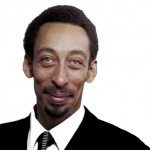Link to Pubmed [PMID] – 22615349
Proc. Natl. Acad. Sci. U.S.A. 2012 Jun;109(23):8890-5
The lux operon derived from Photorhabdus luminescens incorporated into bacterial genomes, elicits the production of biological chemiluminescence typically centered on 490 nm. The light-producing bacteria are widely used for in vivo bioluminescence imaging. However, in living samples, a common difficulty is the presence of blue-green absorbers such as hemoglobin. Here we report a characterization of fluorescence by unbound excitation from luminescence, a phenomenon that exploits radiating luminescence to excite nearby fluorophores by epifluorescence. We show that photons from bioluminescent bacteria radiate over mesoscopic distances and induce a red-shifted fluorescent emission from appropriate fluorophores in a manner distinct from bioluminescence resonance energy transfer. Our results characterizing fluorescence by unbound excitation from luminescence, both in vitro and in vivo, demonstrate how the resulting blue-to-red wavelength shift is both necessary and sufficient to yield contrast enhancement revealing mesoscopic proximity of luminescent and fluorescent probes in the context of living biological tissues.





